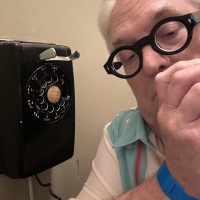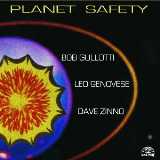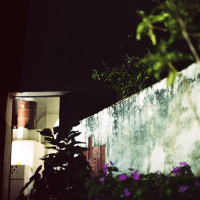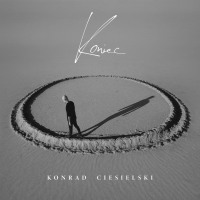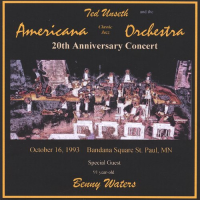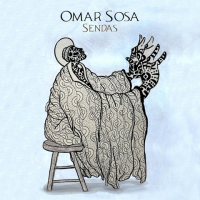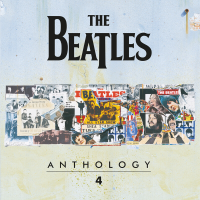Home » Jazz Articles » Bailey's Bundles » ECM Jazz
ECM Jazz
What is it that gives a record label its particular sound? At mid-20th Century Blue Note, producer Alfred Lion wanted the music, above all, to "schwing." One way Lion ensured that his label would "schwing" was by the stellar stable of musicians he recorded. During Blue Note's heyday, these musicians included drummer Art Blakey, pianists Horace Silver, Sonny Clark and Herbie Hancock, tenor saxophonist Hank Mobley, trumpeters Donald Byrd, Kenny Dorham and Lee Morgan, alto saxophonist Lou Donaldson, organist Jimmy Smith, guitarist Grant Green—and practically every other ranking hard bop player of the period.
These musicians produced an organic brand of bebop and blues that derived more from the church than it did Manhattan's 52nd Street in the 1940s. No less technical and improvisatory, this hard bop added rough edges to the revolutionary bebop that preceded it, manifesting as the "unk" in "funk." A prototypical composition would be pianist Bobby Timmons' "Moanin,'" sweaty church music performed in bars and at house parties.
Another characteristic of the Blue Note sound was its sonics. The sound was well balanced atop a slightly arid background. Breathy tenor saxophonists are captured with a warm ambience manifested as a sensual rasp in the low registers. Trumpet notes (particularly Lee Morgan's) sound like bullets of mercury hitting glass, sharp and well defined.
How does ECM compare to this paradigm? Well, identically. ECM also possesses a stable of musicians whose music imparts a given type of sound, something perhaps described as "ethereal." ECM artists who typify this sound include pianist Keith Jarrett, trumpeter Tomasz Stanko, saxophonist Jan Garbarek, and trumpter Enrico Rava. These examples merely scratch the surface.
ECM also has its own Alfred Lion in Manfred Eicher. Eicher's production includes "booming" silences over which artists paint their sound portraits in exquisite layers. There are no better examples of Eicher's approach than three recent releases: Rava and pianist Stefano Bollani's The Third man, drummer Manu Katche's Play Ground, and tenor saxophonist Dewey Redman's The Struggle Continues. These recordings have generated a great deal of excitement, all well deserved.
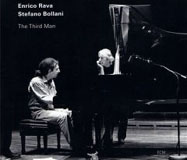 Enrico Rava/Stefano Bollani
Enrico Rava/Stefano Bollani
The Third Man
ECM Records
2007
Enrico Rava is ECM's mid-register trumpet master. In an age where trumpeters are still compared with the godfather, Miles Davis, Rava has staked out his musical territory and built a body of music immediately identifiable and acutely crafted. On The Third Man, Rava duo's with pianist Stefano Bollani on a carefully considered collection of originals and vastly reworked standards, offers the listener a look at (or, rather, a listen to) ECM's use of the plush silence upon which the performances are painted.
Rava and Bollani perform almost independently of one another, each artist's melody lines intertwining with the other, cushioned on that brilliant bed of silence. This is late night music, nocturnal, dream-like. The Italian standard "Estate" is deftly deconstructed by the duo into a moody, melancholy poem. Where "Estate" is sensually amorphous, "In Search Of Titina" is tautly angular, a perusal of scales and time, independently realized.
Between these two compositions is the airy "Sun Bay," which incorporates the opaque lyricism of the former with the angular momentum of the latter. The result is a uniquely balladic performance that perfectly frames Rava's warm open bell tone with Bollani's fractured chromaticism. The intimate confines of the duet have never better been graced.
For a more in-depth treatment of this disc, see John Kelman's review of The Third Man.
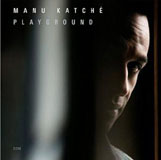 Manu Katche
Manu Katche
Playground
ECM Records
2007
Drummer Manu Katche follows up his well received Neighbourhood (ECM, 2006) with Playground. Katche and half of Tomasz Stanko's quartet—pianist Marcin Wasilewski and bassist Slawomir Kurkiewicz—comprise the core rhythm section for the disc. The remaining personnel is filled out with saxophonist Trygve Seim, trumpeter Mathias Eick and guitarist David Torn.
Collectively, the group hovers like mist above a cool river over the signature ECM cushion of silence. The disc opener, "Lo" is a peaceful ballad incorporating all performers in a lightly tethered melody performed in breathy fashion by Seim and Eick. Torn adds muscularity to the coda. "Pieces Of Emotion" is characterized by a simple piano figure over which the horns play plaintively. Seim's soprano saxophone winds serpentine about Wasilewski's left hand. "Song For Her" sponsors an effective bass solo by Kurkiewicz who is empathically in tune with Katche's compositional style.
At least until the heat gets turned up enough to blow off the mist on "So Groovy." Katche's backbeat alone is enough to create a gale. Eick plays a soft, round open bell solo with equal hints of Davis, Enrico Rava, and Tomasz Stanko. The song builds in funky jazz density. "Motion" allows the rhythm section to show off in a mid-tempo update of the Jazz Messengers. This might be how Art Blakey plays the drums in heaven.
This is effortless music that is not un-necessarily pinned down because of rigid harmonic matters. It floats for lack of a better word, each instrument with its own musical vapor pressure. The freedom principle is very much in evidence here, but not so much that chaos results.
For a more in-depth treatment of this disc, see Budd Kopman's review of Playground.
 Dewey Redman Quartet
Dewey Redman Quartet
The Struggle Continues
ECM Records
2007
The Struggle Continues might be the most "traditional" of offerings among this recent spate of ECM releases, sounding like it could having been recorded 25 years ago (as it actually was). It sports some amazingly focused playing by the tenor leader, Dewey Redman solidly supported by pianist Charles Eubanks, bassist Mark Helias and the beautifully elegant drummer Ed Blackwell.
Dewey Redman was always too close to multi-instrumentalist Don Cherry for mainstream comfort. A dedicated progressive jazz player, like saxophonist Archie Shepp, Redman was capable of pulling up the old stuff. The Struggle Continues is a recital of six lengthy yet taut compositions, including Charlie Parker's "Dewey Square," here recast in a lofty free mode.
Redman plays straight-ahead jazz. No screeching, honking late-period John Coltrane bore-the-listener-to-death doodling here. "Thren" initiates the disc with updated bop. Redman meanders over the straight 4/4 of bassist Helias and drummer Blackwell. "Love Is" starts off standard enough and ends as something else altogether, with a floating time signature. Like A Clockwork Orange, The Struggle Continues sounds as new and fresh today as it did late last century.
For a more in-depth treatment of this disc, see John Kelman's review of The Struggle Continues.
Tracks and Personnel
The Third Man
Tracks: Estate; The Third Man; Sun Bay; Retrato Em Branco Y Preto; Birth Of A Butterfly; Cumpari; Sweet Light; Santa Teresa; Felipe; In Search Of Titina; Retrato Em Branco Y Preto, Var.; Birth Of A Butterfly, Var.
Personnel: Enrico Rava: trumpet; Stefano Bollani: piano.
Playground
Tracks: Lo; Pieces Of Emotion; Song For Her; So Groovy; Morning Joy; Motion; Project 58; Snapshot; Possible Thought; Inside Game; Clubbing; Song For Her; Var.
Personnel: Manu Katche: drums; Marcin Wasilewski: piano; Slawomir Kurkiewicz: double-bass; Trygve Seim: tenor and soprano saxophones; Mathias Eick: trumpet; David Torn: guitar (1,12).
The Struggle Continues
Tracks: Thren; Love Is; Turn Over Baby; Joie De Vivre; Combination; Dewey Square.
Personnel: Dewey Redman; tenor saxophone; Charles Eubanks: piano; Mark Helias: bass; Ed Blackwell: drums.
Tags
PREVIOUS / NEXT
Support All About Jazz
 All About Jazz has been a pillar of jazz since 1995, championing it as an art form and, more importantly, supporting the musicians who make it. Our enduring commitment has made "AAJ" one of the most culturally important websites of its kind, read by hundreds of thousands of fans, musicians and industry figures every month.
All About Jazz has been a pillar of jazz since 1995, championing it as an art form and, more importantly, supporting the musicians who make it. Our enduring commitment has made "AAJ" one of the most culturally important websites of its kind, read by hundreds of thousands of fans, musicians and industry figures every month.

